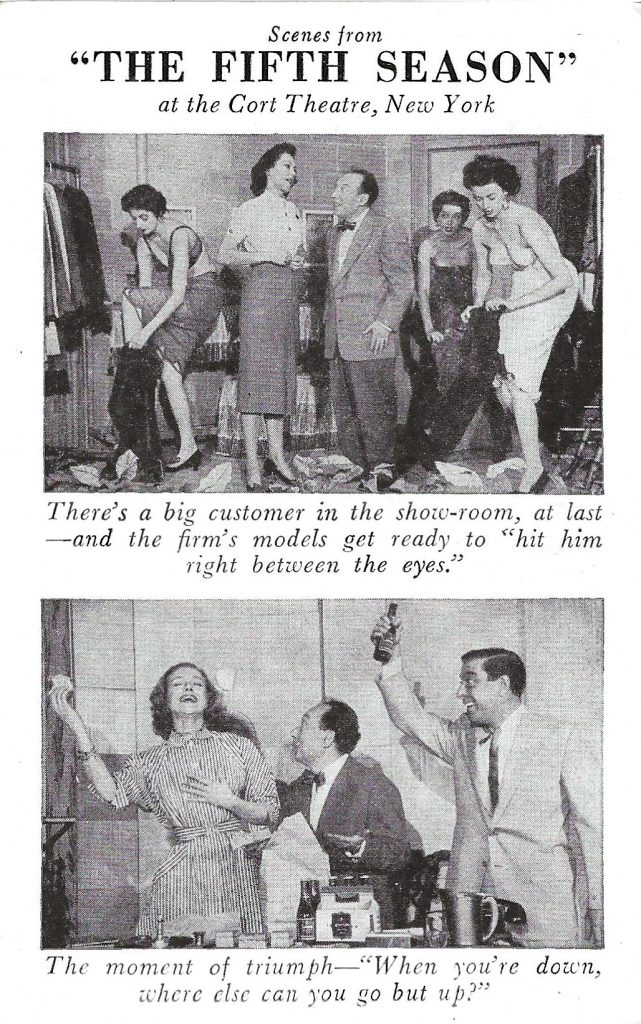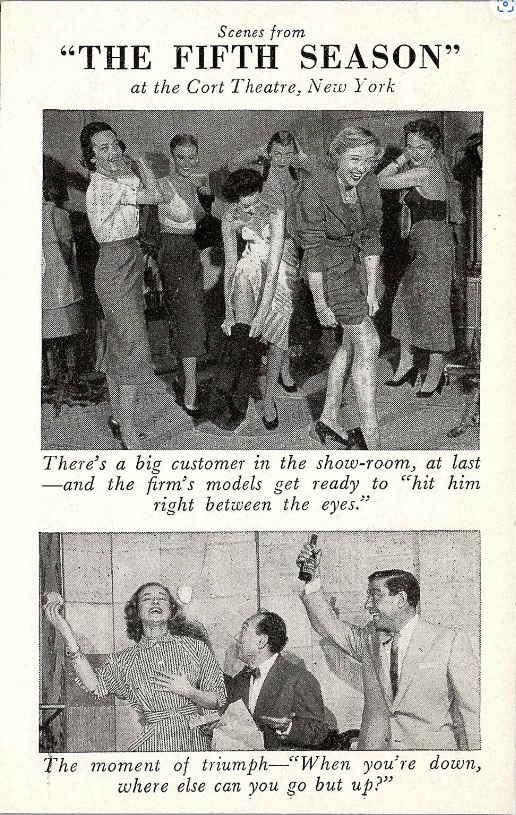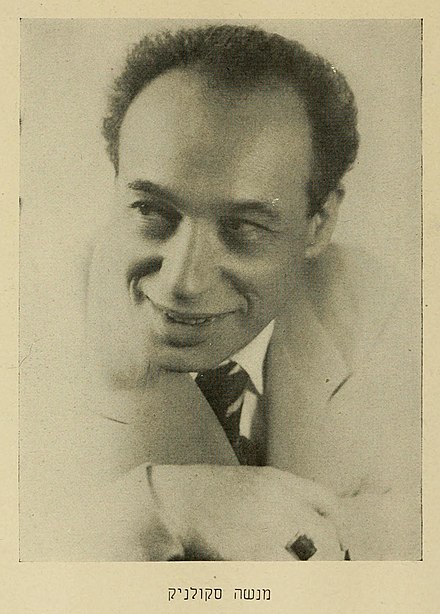Editor’s Staff
Cort Theatre Postcards
from the 1950s
In January 1953, the Cort Theatre at 138 W. 48th Street, between Sixth and Seventh Avenues in Manhattan (New York City) was about to open its doors to the premiere of “The Fifth Season,” a farce about two partners in the dress industry by Sylvia Regan. The theater was built in 1912 for impresario John Cort, who had been a very successful west coast theater operator. In 1905 when he decided to move his operations to New York he controlled 150 vaudeville stages and playhouses in cities from San Diego to Seattle.
The Cort opened on December 20, 1912, with the musical Peg o’ My Heart. The critics of the time considered the Cort to be physically on the “wrong side” of Broadway, (east or west of Broadway, “west was best” according to many), but nonetheless, the theater was described in one source as “one of the most exquisitely beautiful playhouses in Manhattan.” Theatre magazine wrote of the Cort’s “commanding lines, comfortable seats and admirable acoustic properties.” The only exception taken was that pink was too delicate a shade for the interior.
Peg o’ My Heart had over 600 performances, a major accomplishment for the time, when 100 performances was considered a hit.


It is that week in 1953, that we turn our attention, prompted by these postcards. Robert Sylvester of The New York Daily News, wrote on Saturday, January 24, 1953, the following review:
In the decades following, the Cort was the host of a series of premieres and revivals that numbered in the hundreds. Then came the 1950’s – a banner decade at the Cort, which included hits such as Saint Joan (1951), The Shrike (a Pulitzer Prize winner in 1952), The Fifth Season (1953), The Rainmaker (1954) and the first major production of The Diary of Anne Frank, that opened in 1955 and played for more than a year.

Unlike an Arthur Miller hero, I am … willing to confess. I confess that Menasha Skulnik is one of the funniest men who ever lived. And I also confess that I don’t much care whether The Fifth Season is a good play or not. Menasha is in it and that’s good enough for me.
In Sylvia Regan’s “The Fifth Season,” which arrived last night at the Cort Theatre, Skulnik is costarred in his first Broadway play with a perfect straight man, Richard Whorf. As a comedy, or as a farce, or even as a vaudeville act, it is full of large gaping holes, but it is also full of loud laughs and unexpected jokes and Skulnik is on stage almost all the time.
“The fifth season” has other things to recommend it. It has an unsorted half-dozen beautiful models who are really models and (for the sake of dramatic art only) are not only willing but anxious to strip right down to their brassieres and panties. It has the aforementioned Whorf, as a busy young executive type who manages to get some reason out of his role. And, it has Phyllis Hill who looks as lush and appealing as a Georgia peach. And it has Lois Wheeler as an attractive refugee.
As for the play itself, it has to do with two partners in what is called the dress industry. They aren’t doing good, as we say locally, until a playboy who owns a big string of dress shops comes in and digs the models in their [underwear]. Then the big buyer reneges a little when payment time comes.
[The melee continues until everybody is upset at something.]
In the last act, everybody gets reset again, And everybody gets real happy and rich. If other people had reactions to the dramatic line of “The Fifth Season” all I can say is that I’m sorry. I saw what I seen or what I like to think I seen.

The Fifth Season closed in October 1954 after 654 performances. (Remember, in the early 1900s, any performance count over 100 was considered a hit show.) The cards seen above were produced and given free to audience members as advertising pieces as was a card for The Rainmaker, starring Geraldine Page, and Darren McGavin that followed. Other Cort theaters across the country issued cards as well. One of the earliest Cort Theatre postcards advertised the 1915 Chicago production of Peg o’ My Heart starring Peggy O’Neil.
For every Broadway historian who may be reading, even though the theater was used as a television studio for the Merv Griffin show from 1969 to 1972, it has mostly remained in theatrical use through the years. In 2022 it was closed, renovated, and reopened as the James Earl Jones Theatre.
Manasha Skulnik was a superstar of the Second Avenue Yiddish theater circuit and among the few who crossed over to successful careers in mainstream Broadway. Others included Paul Muni, Molly Picon, Edward G. Robinson and many more. He was extremely funny in Yiddish for using the double entendre. He often mixed English words into his dialogues adding to the confusion and delight. His career flowered after WWII when many Yiddish-speaking survivors came to New York and cheered his characters. His high-pitched nasal voice was instantly funny. Postcards of his Yiddish shows are available and extremely collectable. PS. I’ve been developing… Read more »
Geraldine Page was married to actor Rip Torn, and their house was fittingly dubbed “Torn Page”.